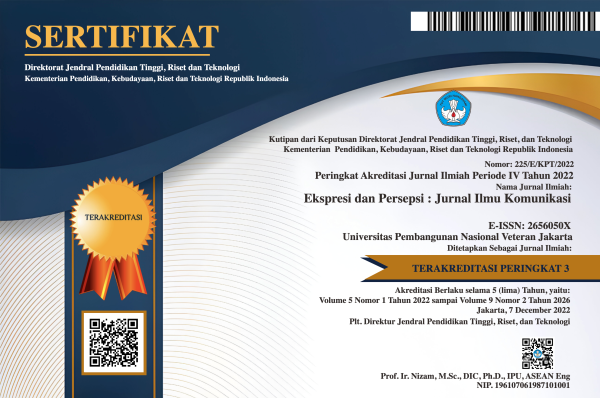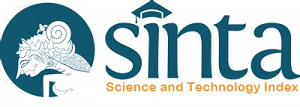The New Audiobook Industry: Digitizing Reading Through Hearing
DOI:
https://doi.org/10.33822/jep.v7i2.7721Keywords:
audiobook industry, digital literacy, mobile reading, new digital audiobook, reading and listening, trends and role of audiobooksAbstract
Technological developments have changed how people communicate and read, especially audiobooks. Initially, audiobooks were aimed at helping people with special needs and reading difficulties. However, with digitalization, audiobooks are becoming a more popular format and have platforms with subscription services. This research aims to explore recent developments in the audiobook industry and re-evaluate the concept of reading by ear in the digital era. This research uses a literature review method by collecting and analyzing various library sources relevant to audiobooks. The audiobook industry is experiencing rapid growth as digital audiobooks become increasingly popular. Audiobooks are an alternative to printed books and an independent medium that offers a different reading experience. Audiobooks have also been shown to improve general literacy skills, positively impact older people's mental health, and improve sleep quality and meaning. The development of the audiobook industry has revolutionized how humans consume literary content, opening a new window into the world of stories and knowledge through hearing. The development of the audiobook industry influences how people read literature by making access more accessible, increasing engagement, and enriching the reader's experience. This shows the importance of adapting to technology in forming new ways of reading and listening to literary works. Audiobooks also have a role in various aspects of human life, such as education, literature, entertainment, and health.
References
Berglund, K., Dahllöf, M., & Dahllöf, M. (2021). Journal of Cultural Analytics Audiobook stylistics: Comparing print and audio in the bestselling segment. Journal of Cultural Analytics, 11, 1–30. https://doi.org/10.7910/DVN/MK6SXT
Betts, R. F., & Bly, L. (2013). A History of Popular Culture More of Everything, Faster and Brighter (2nd ed.).
Chen, W. C. & Wang, X. Y. (2023). The contribution of audiobook use on the mental health of older adults: the mediating effects of social adaptation. Aging and Mental Health. https://doi.org/10.1080/13607863.2023.2281634
Clarke, V. & Braun, V. (2006). Using thematic analysis in psychology. Qualitative Research in Psychology, 3, 77-101. https://doi.org/10.1191/1478088706qp063oa
Clarke, V. & Braun, V. (2017). Thematic analysis. The Journal of PosiTive Psychology, 12 (3). http://dx.doi.org/10.1080/17439760.2016.1262613
Cooper, C., Booth, A., Varley-Campbell, J., Britten, N., & Garside, R. (2018). Defining the process to literature searching in systematic reviews: a literature review of guidance and supporting studies. BMC Medical Research Methodology, 18 (1), 85. https://doi.org/10.1186/s12874-018-0545-3
Elislah, N., & Irwansyah. (2022). Audiobook Industry: Reading by Using Ear in the Digital Age. Jurnal Komunikasi Indonesia, 11 (2). https://doi.org/10.7454/jkmi.v11i2.1028
Elleström, L. (2020). Beyond Media Borders, Volume 1 Intermedial Relations among Multimodal Media.
Fisher, M. Z. (2021, January 7). Turn up the volume on audiobooks. Accessed from: https://www.nextavenue.org/tune-into-audiobooks/
Grant, M. J., & Booth, A. (2009). A typology of reviews: an analysis of 14 review types and associated methodologies. Health Information & Libraries Journal, 26 (2), 91–108. https://doi.org/10.1111/j.1471-1842.2009.00848.x
Have, I., & Pedersen, B. S. (2012). Conceptualising the audiobook experience. Sound Effects, 2 (2).
Have, I., & Pedersen, B. S. (2020). The audiobook circuit in digital publishing: Voicing the silent revolution. New Media and Society, 22(3), 409–428. https://doi.org/10.1177/1461444819863407
Have, I., & Pedersen, B. S. (2021). Reading audiobooks. Intermedial Relations among Multimodal Media, 1, 197–216. https://doi.org/10.1007/978-3-030-49679-1_6
Irwansyah. (2023). Literature Review Sebagai Metode Riset. CV. Amerta Media.
Jaworski, R. (2021, April 9). Numbers and facts you need to know about audio content in 2021. Accessed from: https://www.trinityaudio.ai/numbers-and-facts-you-need-to-know-about-audio-content-in-2021
Kovač, M., & Gudinavičius, A. (2020). Publishing under COVID-19 in small book markets. Knygotyra, 75, 17–37. https://doi.org/10.15388/Knygotyra.2020.74.58
Linkis, S. T. (2021). Reading spaces: Original audiobooks and mobile listening. Sound Effects - An Interdisciplinary Journal of Sound and Sound Experience, 10 (1), 42–55. https://doi.org/10.7146/se.v10i1.124197
Marchetti, E., & Valente, A. (2018). Interactivity and multimodality in language learning: the untapped potential of audiobooks. Universal Access in the Information Society, 17 (2), 257–274. https://doi.org/10.1007/s10209-017-0549-5
Mediatore, K. (2003). Reading with your ears. Reference and User Services Quarterly, 42 (4), 318–323.
Meiristiani, N., Yuvita, Y., Rosdiana, I., Sulistyawati, A. E., & Jamaludin, S. (2022). Program Pelatihan Digitalisasi Media Literasi Untuk Pendidikan Bahasa dan Sastra di Kota Tegal Jawa Tengah. Jurnal Abdimas Adpi Sosial Dan Humaniora, 3 (2), 278–286. https://doi.org/10.47841/jsoshum.v3i2.157
Mermer, E., & Arslan, S. (2024). The effect of audiobooks on sleep quality and vital signs in intensive care patients. Intensive and Critical Care Nursing, 80. https://doi.org/10.1016/j.iccn.2023.103552
Moyer, J. E. (2012). American Library Association Audiobooks and E-books: A Literature Review. Reference & User Services Quarterly, 51 (4), 340–354. https://doi.org/10.2307/refuseserq.51.4.340
Page, M. J., McKenzie, J. E., Bossuyt, P. M., Boutron, I., Hoffmann, T. C., Mulrow, C. D., Shamseer, L., Tetzlaff, J. M., Akl, E. A., Brennan, S. E., Chou, R., Glanville, J., Grimshaw, J. M., Hróbjartsson, A., Lalu, M. M., Li, T., Loder, E. W., Mayo-Wilson, E., McDonald, S., … Moher, D. (2021). The PRISMA 2020 statement: an updated guideline for reporting systematic reviews. International Journal of Surgery, 88, 105906. https://doi.org/10.1016/j.ijsu.2021.105906
Poerio, G., & Totterdell, P. (2020). The effect of fiction on the well-being of older adults: A longitudinal RCT intervention study using audiobooks. Psychosocial Intervention, 29 (1), 29–37. https://doi.org/10.5093/PI2019A16
Pratiwi, I., Akhdiyatul, A., & Aida, N. (2022). Improving Students Reading Fluency through Audiobooks in Remote Learning. DIKSI: Jurnal Kajian Pendidikan Dan Sosial, 3 (2), 109–116. https://doi.org/10.53299/diksi.v3i2.214
Rubery, M. (2008). Play it again, sam weller: New digital audiobooks and old ways of reading. Journal of Victorian Culture, 13 (1), 58–79. https://doi.org/10.3366/E1355550208000088
Rubery, M. (2011). Audiobooks, Literature, and Sound Studies. Routledge.
Rubery, M. (2017). The Untold Story of the Talking Book. Sharp News.
Savitri, W. E., & Munir, A. (2022). The use of Xreading books and audios for extensive reading program. Innovation on Education and Social Sciences, 42–48. https://doi.org/10.1201/9781003265061-6
Snelling, M. (2021). The audiobook market and its adaptation to cultural changes. Publishing Research Quarterly, 37 (4), 642–656. https://doi.org/10.1007/s12109-021-09838-1
Sumarni, Ambarwati, A., & Badrih, M. (2024). Pemanfaatan Spotify sebagai media dongeng dalam upaya digitalisasi sastra anak. Jurnal Kependidikan Didaktika, 13 (1). https://doi.org/10.58230/27454312.408
Tsany, A. P. (2021). The Implementation of Storynory audiobook in teaching reading narrative text. Jurnal Pendidikan Indonesia, 2 (7). https://doi.org/10.59141/japendi.v2i07.221
Wallin, T. E. (2021). Reading by listening: Conceptualising audiobook practices in the age of streaming subscription services. Journal of Documentation, 77 (2), 432–448. https://doi.org/10.1108/JD-06-2020-0098
Wallin, T. E. (2022). Audiobook routines: identifying everyday reading by listening practices amongst young adults. Journal of Documentation, 78 (7), 266–281. https://doi.org/10.1108/JD-06-2021-0116
Wallin, T. E., & Nolin, J. (2020). Time to read: Exploring the timespaces of subscription-based audiobooks. New Media and Society, 22 (3), 470–488. https://doi.org/10.1177/1461444819864691
Wolfson, G. (2008). Using audiobooks to meet the needs of adolescent readers. American Secondary Education, 36 (2), 105-114.
Yuwono, A., Rendy, F., & Yandha, K. N. (2020). Pengantar teknologi audio. https://indonesia.sae.edu/wp-content/uploads/2021/03/Pengantar-Teknologi-Audio.pdf
Downloads
Published
Issue
Section
License
Copyright (c) 2024 Nabilah Razani, Via Lesmana

This work is licensed under a Creative Commons Attribution-NonCommercial 4.0 International License.














